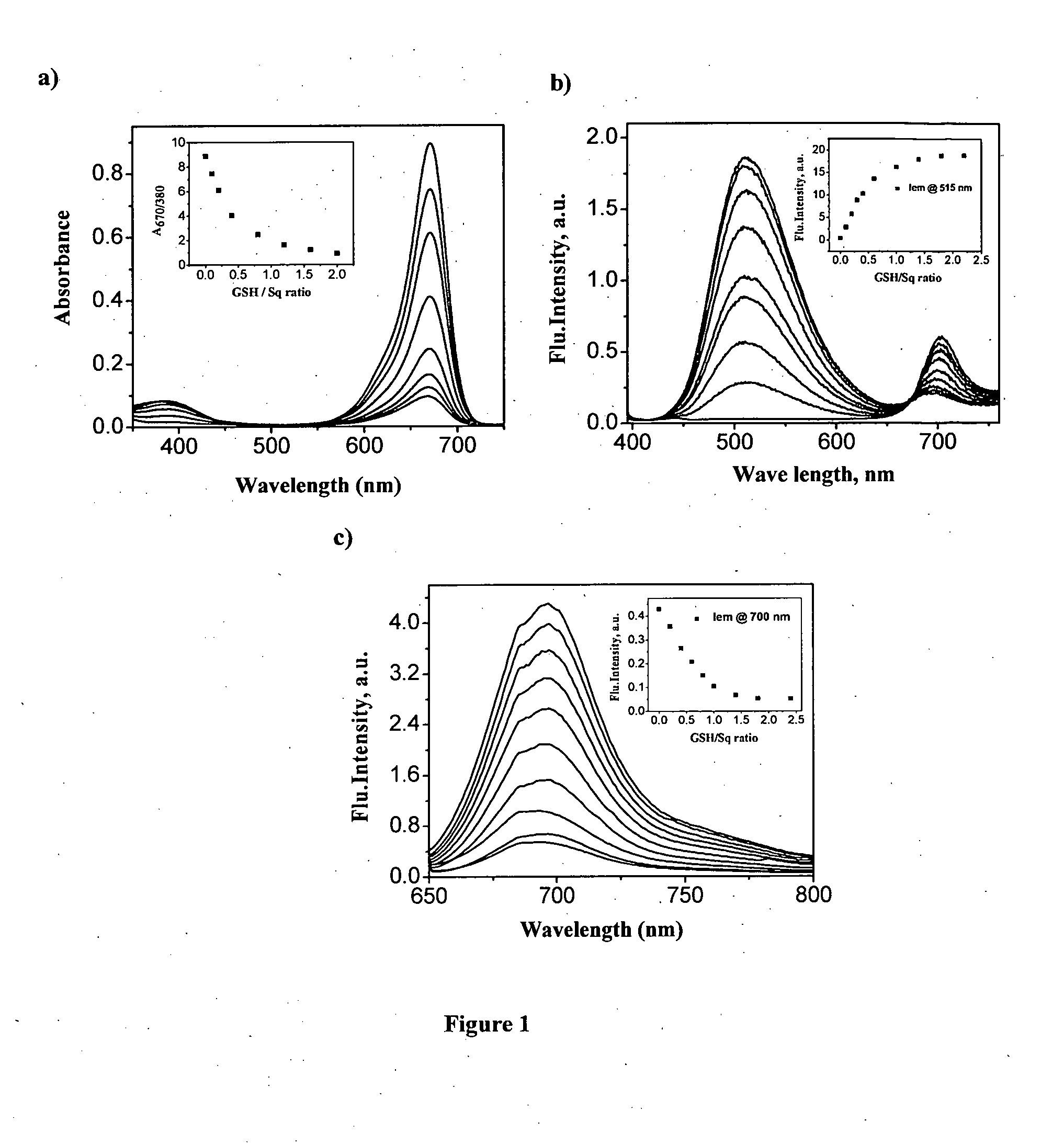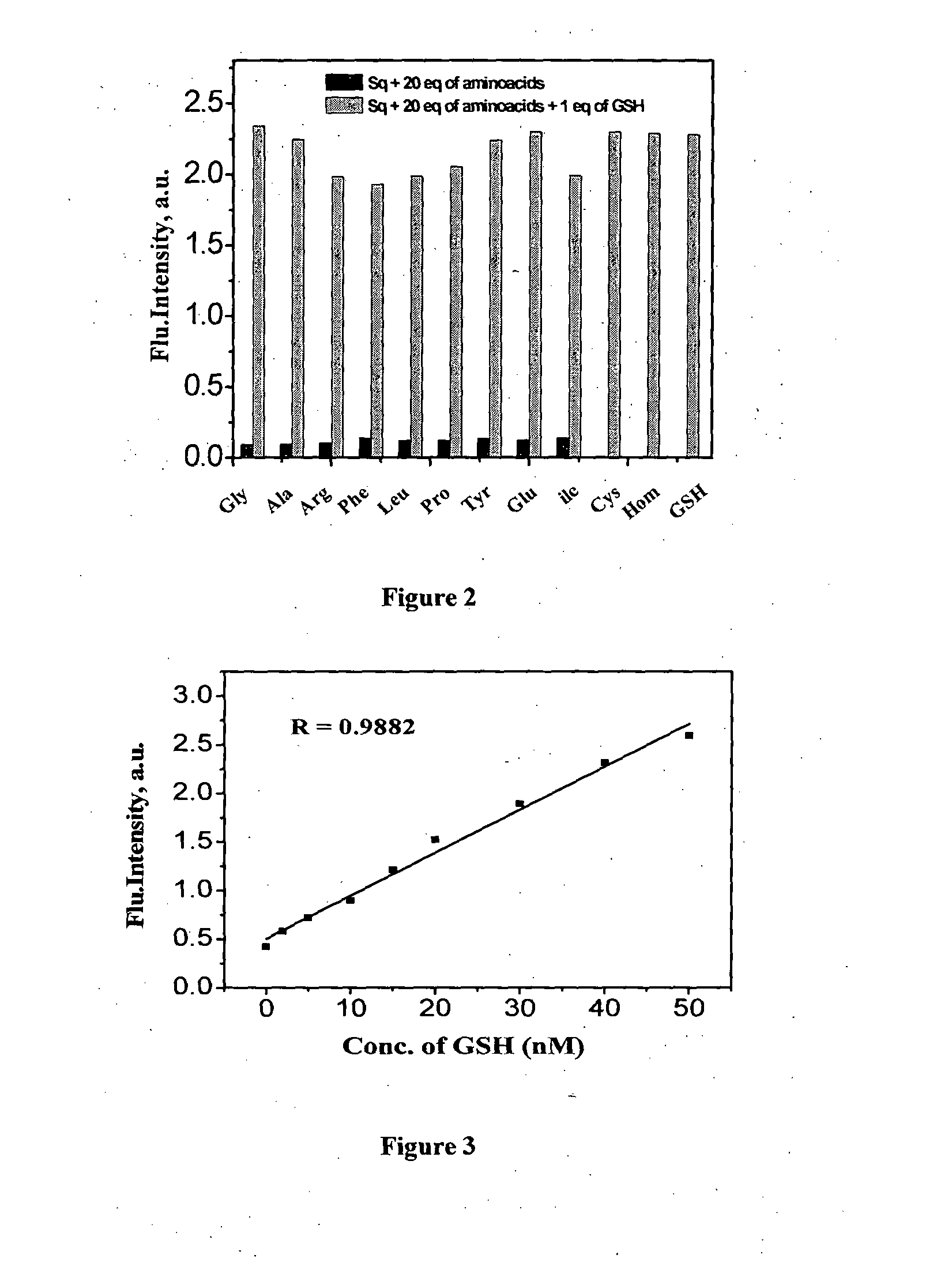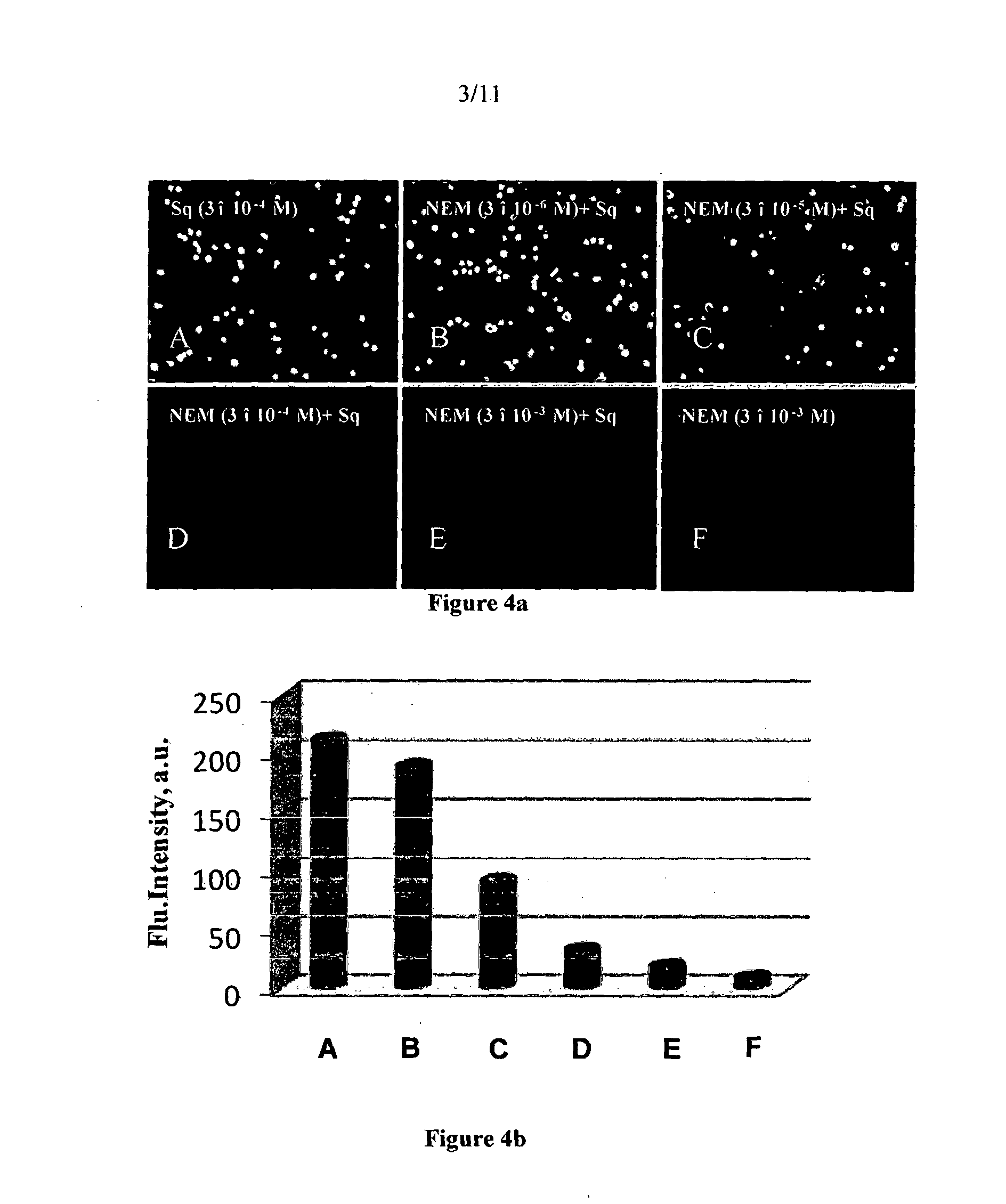Squaraine based fluorescent probe and a process for the preparation thereof
a fluorescent probe and squaraine technology, applied in the field of squaraine based fluorescent probes, can solve the problems of inapplicability to the detection of intracellular thiol imaging, poor reactivity of the probe, and limited detection of thiols inside the cell in the milli-molar rang
- Summary
- Abstract
- Description
- Claims
- Application Information
AI Technical Summary
Benefits of technology
Problems solved by technology
Method used
Image
Examples
example 1
Preparation of Formula 1
[0111]
[0112]0.3 mmol of 2 and 0.3 mmol of 3 were dissolved in 30 mL of isopropanol and stirred well. 1 mL of TBOF was added. After refluxing at 80° C. for 12 h, the reaction mixture obtained was cooled followed by the removal of isopropanol by distillation. The crude product precipitated from petroleum ether was filtered and redissolved in CHCl3 and further purified by column chromatography over silica gel using 2% MeOH / CHCl3. Yield 40-45%. And the product was characterized by UV, NMR, 13C NMR and HRMS.
[0113]1H NMR (500 MHz, CDCl3, δ): 8.3 (d, 2H, Ar H), 7.92 (d, 1H, Ar H), 7.64 (d, 1H, vinylic, J=16.5 Hz), 7.35 (d, 1H, vinylic, J=16.5 Hz), 7.16 (s, 1H, Ar H), 6.96 (d, 1H, Ar H), 6.86 (d, 2H, Ar H), 6.71 (d, 2H, Ar H), 4.98 (t, 2H, —NCH2), 3.87 (s, 6H, —OCH3) 3.83 (t, 2H, —OCH2), 3.55 (t, 4H, —NCH), 3.36-3.55 (m, 8H, —OCH2), 3.28 (s, 3H, —OCH3), 1.63 (m, 4H, CH2), 1.41 (m, 4H, CH2), 0.98 (t, 6H, CH3). 13C NMR (CDCl3, 150 MHz) δ 13.88, 20.23, 29.59, 47.15, 51....
example-2
Procedure for Noncovalent Labeling of Serum Albumin Protein
[0114]Stock solution of Sq (1.2×10−3 M) was prepared in acetonitrile and stock solution of BSA protein (2.4×10−3M) was prepared in 25 mM phosphate buffer at pH 4.2. 15 μL of Sq from the stock solution is added to the 25 mM phosphate buffer at pH 4.2, to make the resulting concentration of the solution into 6×10−6 M. To this solution different volumes ranging from 7.5-150 μL of BSA protein were added and the absorption and emission spectra were recorded each time after 20 minutes. The broad absorption (550-850 nm) corresponding to the absorption of Sq aggregates narrowed with a turn-on fluorescence at 700 nm (λexc @ 640 nm) emission was observed.
example-3
Procedure for Covalent Labeling Serum Albumin Protein
[0115]Stock solution of Sq (1.2×10−3 M) was prepared in acetonitrile and stock solution of BSA protein (1.2×10−3 M) was prepared in 25 mM phosphate buffer at a pH of 8.2. 15 μL of Sq from the stock solution is added to 25 mM phosphate buffer at pH 8.2, to make the resulting concentration of the solution to 6×10−6 M. To this solution different volumes ranging from 1.5-36 μL of BSA protein were added and the absorption and emission spectra were recorded at 15 minutes interval. The broad absorption (550-850 nm) corresponding to the absorption of Sq aggregates quenched with concomitant formation of an absorption at 380 nm was observed (FIG. 8a). Similarly emission spectra showed a “turn-on” fluorescence response at 480 nm (λexc @ 380 nm) (FIG. 8b).
PUM
| Property | Measurement | Unit |
|---|---|---|
| temperature | aaaaa | aaaaa |
| size | aaaaa | aaaaa |
| pH | aaaaa | aaaaa |
Abstract
Description
Claims
Application Information
 Login to View More
Login to View More - R&D
- Intellectual Property
- Life Sciences
- Materials
- Tech Scout
- Unparalleled Data Quality
- Higher Quality Content
- 60% Fewer Hallucinations
Browse by: Latest US Patents, China's latest patents, Technical Efficacy Thesaurus, Application Domain, Technology Topic, Popular Technical Reports.
© 2025 PatSnap. All rights reserved.Legal|Privacy policy|Modern Slavery Act Transparency Statement|Sitemap|About US| Contact US: help@patsnap.com



